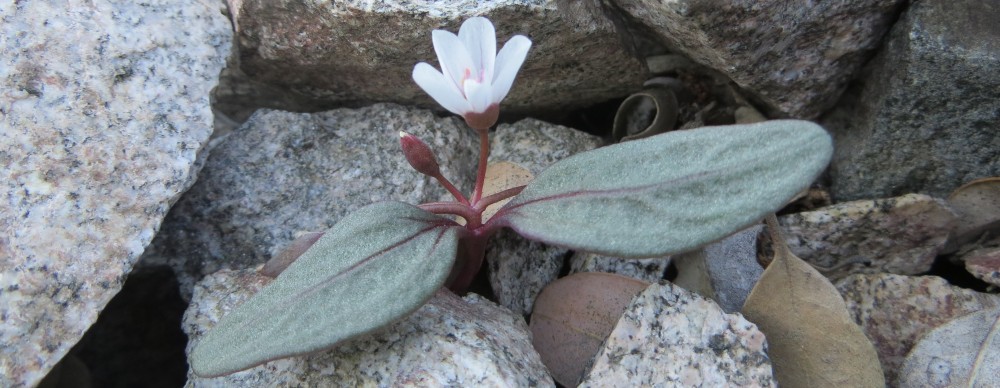I’ve been on a bit of a rant lately concerning hybridization in plant species complexes, which recently resulted in my last post suggesting hybridization could be a potential ‘solution’ to the problem of an ever-changing climate. I want to dig a little deeper now and ask the questions — can generalist pollinators have anything to do with the maintenance of a generalized floral form in Claytonia? If so, can this indirectly act as a selective force for increased hybridization among distantly (and closely) related species? If you have seen the ‘face shots’ from a recent ‘Spring Beauty Pageant‘ than you know what I’m talking about. Maybe you’ve even suggested to a friend, because Claytonia grow like weeds where you are from, that you believe there to be little variation in floral form among species in the genus. I’d agree with you, to a certain extent… but then again, maybe there is so much intra-population variation in floral morphology (coloration, petal shape) that we are blind to see the true pattern of differentiation in floral form among closely related taxa. I’ve touched upon the subject of within-population variation of the flowers of one member of the C. “peirsonii” complex from the southern Sierra Nevada, but now I want to expand on this subject with photographs taken within a single population of C. lanceolata sensu lato on the Great Continental Divide in Montana. As you can easily tell from the first picture below, in which all of the white spots are Claytonia flowers, it is not difficult to conduct this sort of ‘experiment’ yourself. In other words, it is easy to get a lot of face-on photographs of Claytonia flowers because they occur in extremely dense populations. This spring, try to see how much your favorite Claytonia varies in its floral form — you may be surprised at what you find!
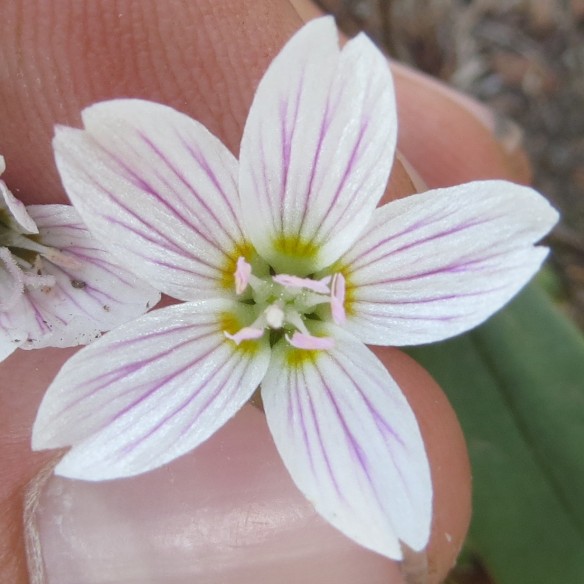


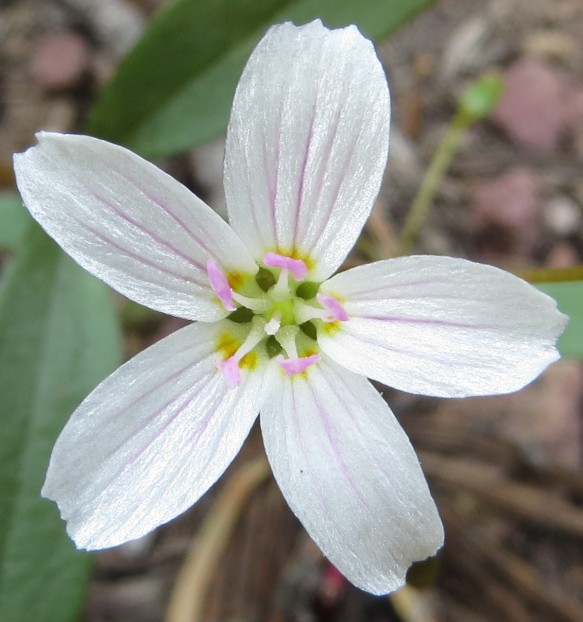
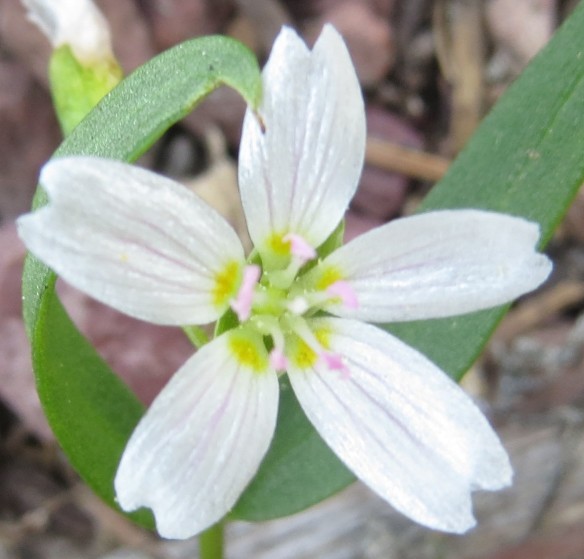
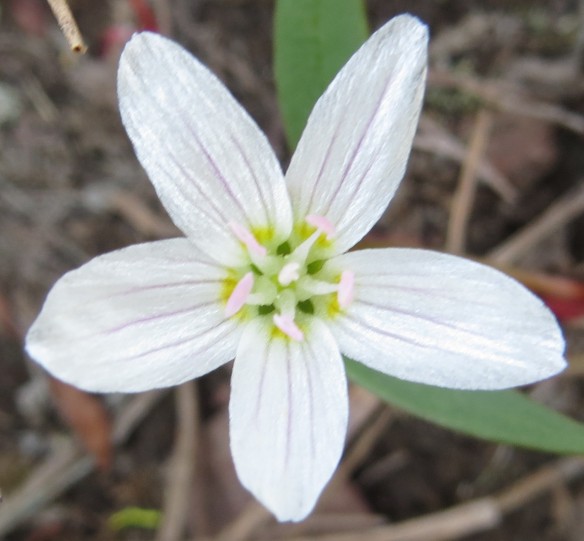
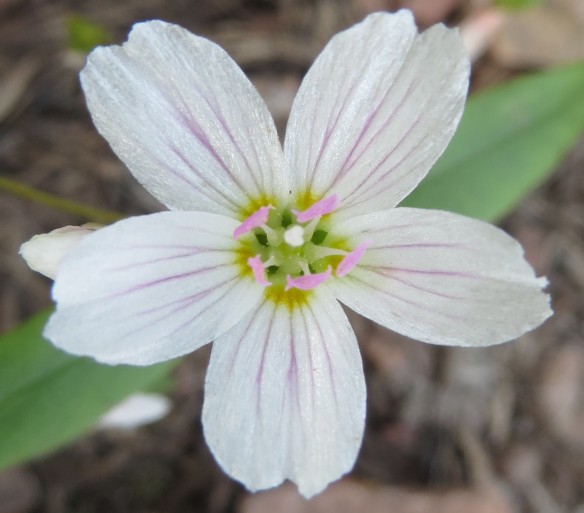
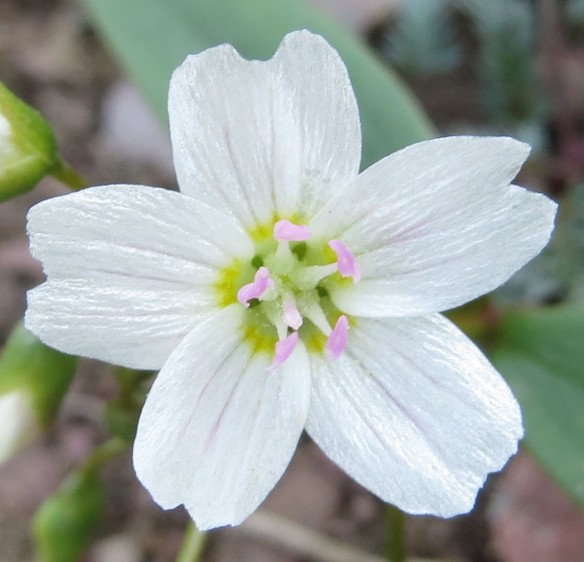
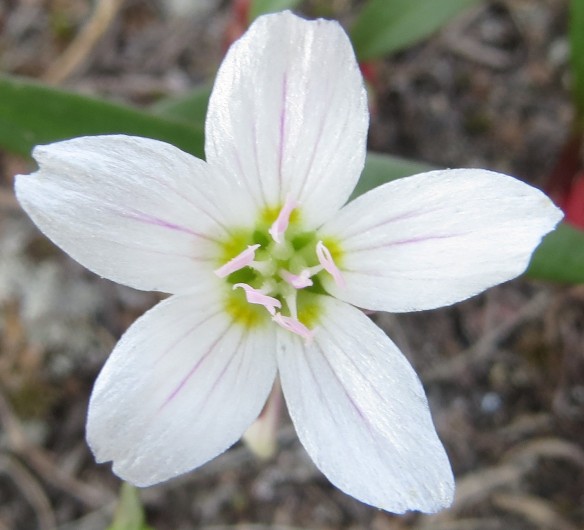
 Keep in mind that all of the above pictures are of plants that occur in a single population of C. lanceolata sensu lato on the Great Continental Divide in Montana. As evidenced by the last photograph, even merosity can go haywire from time to time. If I showed you just that last picture, you might even confuse the plants for Lewisia. That is a lot of variation! Are these hybrid plants of C. lanceolata (which has retuse petal apices) crossed with another species in the area with entire petals? Good question! Let me get back to you on that one…
Keep in mind that all of the above pictures are of plants that occur in a single population of C. lanceolata sensu lato on the Great Continental Divide in Montana. As evidenced by the last photograph, even merosity can go haywire from time to time. If I showed you just that last picture, you might even confuse the plants for Lewisia. That is a lot of variation! Are these hybrid plants of C. lanceolata (which has retuse petal apices) crossed with another species in the area with entire petals? Good question! Let me get back to you on that one…
All I know is that multiple Claytonia species can occur in sympatry, and intermediate forms can be found in those areas. This is especially true of the annual species of Claytonia. I haven’t observed putative hybrids among the annuals (i.e., the miner’s lettuces) and tuberous perennials (i.e., C. lanceolata species complex), although I have observed them sharing pollinators in southern California. Pictured below are soft-wing flower beetles (Melyridae) visiting both C. rubra (section Limnia, first picture below) and C. “peirsonii“ (section Claytonia, second picture below) at the same location on the same day in the southern Sierra Nevada, California. You might remember from one of my very first posts: these pollen eaters are quite effective pollinators.
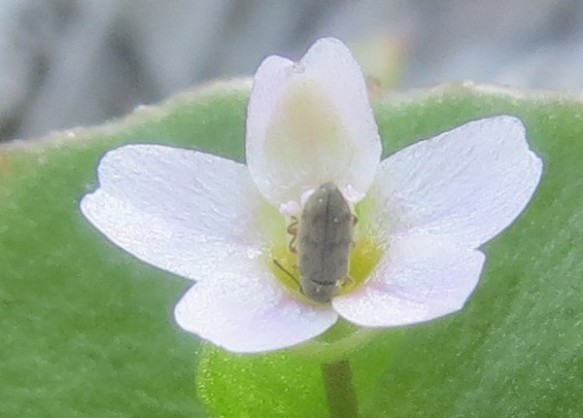
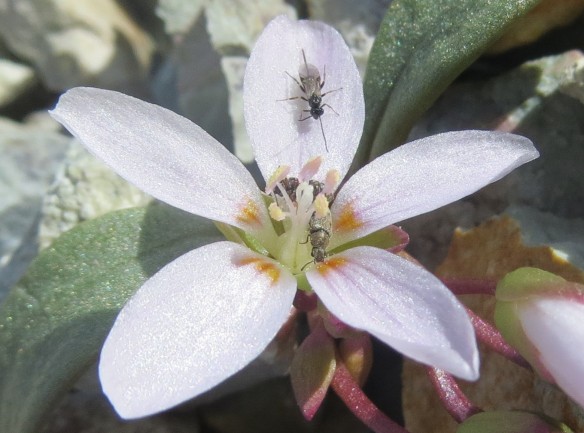 Too many questions for a single dissertation to address, but I’ll see what I can do! 😉
Too many questions for a single dissertation to address, but I’ll see what I can do! 😉
